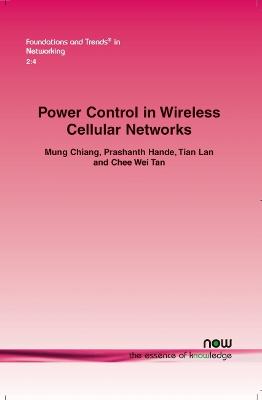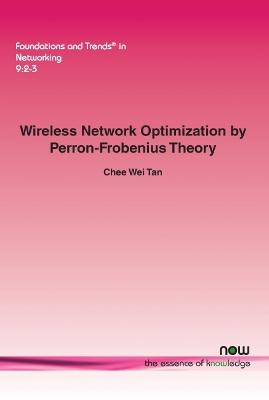Foundations and Trends (R) in Networking
2 total works
Power Control in Wireless Cellular Networks
by Mung Chiang, Prashanth Hande, Tian Lan, and Chee Wei Tan
Published 19 June 2008
Power Control in Wireless Cellular Networks provides a comprehensive survey of the models, algorithms, analysis, and methodologies in this vast and growing research area. It starts with a taxonomy of the wide range of power control problem formulations, and progresses from the basic formulation to more sophisticated ones. When transmit power is the only set of optimisation variables, algorithms for fixed SIR are presented first, before turning to their robust versions and joint SIR and power optimization.
This is followed by opportunistic and non-cooperative power control. Then joint control of power together with beamforming pattern, base station assignment, spectrum allocation, and transmit schedule are surveyed one by one.
This book highlights the use of mathematical language and tools in the study of power control, including optimisation theory, control theory, game theory, and linear algebra. Practical implementations of some of the algorithms in operational networks are discussed in the concluding chapter.
This is followed by opportunistic and non-cooperative power control. Then joint control of power together with beamforming pattern, base station assignment, spectrum allocation, and transmit schedule are surveyed one by one.
This book highlights the use of mathematical language and tools in the study of power control, including optimisation theory, control theory, game theory, and linear algebra. Practical implementations of some of the algorithms in operational networks are discussed in the concluding chapter.
A basic question in wireless networking is how to optimize the wireless network resource allocation for utility maximization and interference management. How can we overcome interference to efficiently optimize fair wireless resource allocation, under various stochastic constraints on quality of service demands? Network designs are traditionally divided into layers. How does fairness permeate through layers? Can physical layer innovation be jointly optimized with network layer routing control? How should large complex wireless networks be analyzed and designed with clearly-defined fairness using beamforming?
Wireless Network Optimization by Perron-Frobenius Theory provides a comprehensive survey of the models, algorithms, analysis, and methodologies using a Perron-Frobenius theoretic framework to solve wireless utility maximization problems. This approach overcomes the notorious non-convexity barriers in these problems, and the optimal value and solution of the optimization problems can be analytically characterized by the spectral property of matrices induced by nonlinear positive mappings. It can even solve several previously open problems in the wireless networking literature. This survey will be of interest to all researchers, students and engineers working on wireless networking.
Wireless Network Optimization by Perron-Frobenius Theory provides a comprehensive survey of the models, algorithms, analysis, and methodologies using a Perron-Frobenius theoretic framework to solve wireless utility maximization problems. This approach overcomes the notorious non-convexity barriers in these problems, and the optimal value and solution of the optimization problems can be analytically characterized by the spectral property of matrices induced by nonlinear positive mappings. It can even solve several previously open problems in the wireless networking literature. This survey will be of interest to all researchers, students and engineers working on wireless networking.

